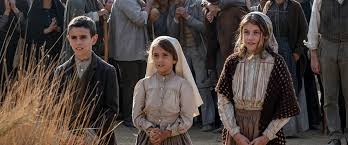2020 version, Fatima, screening nationally.
A review from the Australia Catholic Office for Film and Broadcasting
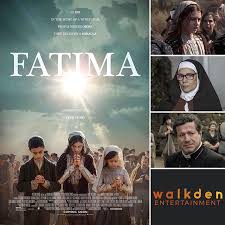
FATIMA
Who would have anticipated a version of the apparitions at Fathima, 1917, in 2020? There had been a Hollywood version in the early 1950s and the British The 13th Day in 2009. But, here is a well-mounted account, filmed in Portugal, an international cast, and a reverential portrayal of the three children, their experience of the apparition of Mary, opposition, devoted pilgrims, the miracle of the sun (including some photographs of the event in October, 1917, and the glimpse of someone filming the event).
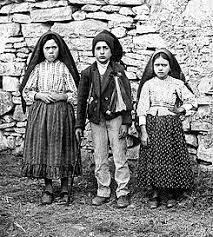
Older Catholics were brought up in the period of the popularity of Our Lady of Fatima, especially in the 1940s and the early 1950s, with the touring statue, devotions and processions. By this time, Catholics took our Lady of Lourdes and the apparitions to Bernadette for granted (and the popularity of the film, The Song of Bernadette in 1943). But, Fatima was nearer to our own times, just before our own times, the post-World War II years. And, of course, Fatima has become one of the major shrines, Marian shrines, in the world.
Lourdes had its sceptics and critics. Fatima has had its sceptics and critics. While there has been a recent increase in popularity of faith-films, audiences who don’t respond to faith-films will not be impressed by miracle stories like this. Interestingly, while the Internet Movie Database has many responses, some of them ridiculing the story as superstitious, many of those responding are older Catholics who are complaining about quite a number of details, favourites for them, the three secrets, the conversion of Russia, the consecration of the world to Mary… which have not been explicitly included.
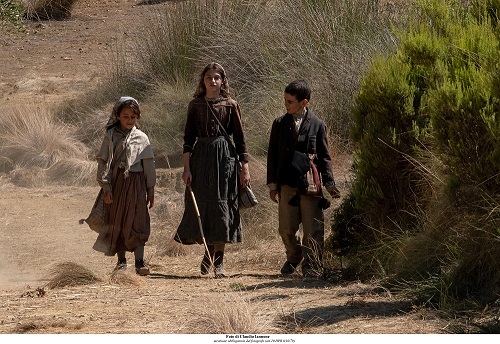
The value of this version of Fatima, for Catholics of a later generation not so familiar with apparitions (except, perhaps, with Medjugorje), is that the story is well situated in the political climate of Portugal in 1917, Republic, secular-minded, oppressive of religion and the Church. It is also well situated in the climate of World War I, the deaths of Portuguese soldiers and those missing in action (including Lucia’s brother). Memory suggests that back in the 1940s and 1950s, we were not so conscious of these real/actual settings.
The other aspect, important for many contemporary audiences, for younger Catholics, are the questions about Mary appearing to 3 small children, in the context of devotions of the time, the responses of the time. The screenplay provides a 1989 framework, a professor (Harvey Keitel) visiting sister Lucia at the Carmelite convent of Coimbra, Lucia in her 80s played by Sonia Braga.
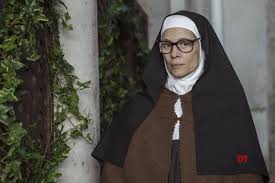
The Professor asks the expected questions which might be rising in the minds of questioning audiences: the reality of the apparitions in the language and iconography of the visionaries, of the period, the image of Mary and statuary, the language of rosary and prayer. There is also the issue of the penitential aspects of devotion at the time, self-inflicted penances in reparation for sinful offence or for emphasising prayers of petition. The professor also raises the issue of the effect of little children being the instrument of preaching peace and prayer rather than an adult appeal.
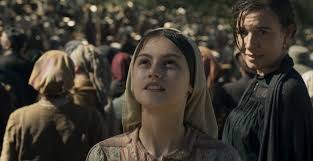
Stephanie Gil is very convincing as Lucia. And the two actors for the smaller children are also very effective, Jacinta and her spontaneous talk, Francesco and his not hearing the words of Mary. This is shown in the context of their village, poor and hard-working, and of the deaths and injuries during the war, the family support, Lucia to 3’s mother harsh, her farmer father supportive. The local priest does the expected questioning, fearing that they are making everything up, but eventually believing them. It is much harder for the Mayor, with orders from Lisbon, with his anti-religious and anti-clerical stances (despite the challenges from his wife), trying to suppress the pilgrimage mentality. People from the village are at times sceptical, hostile, believers. They are desperate for miracles. And, even then, there was commercialism, children with their trays of rosary beads for sale to the pilgrims!
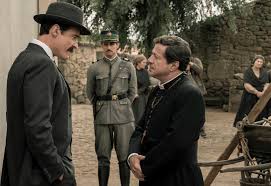
There is an odd evocative, nightmare sequence where Lucia dreams of a Pope and bishops walking through the devastation of the battlefield with guns firing at the Pope.
The 21st-century seems to be an age more sceptical about this kind of religious experience, so hallowed in the past. Here is an opportunity to give some consideration to the credibility, the question that there are more events and experiences than matter-of-fact realism believes in.
A number of photos appear during the final credits, a reminder that Jacinta and Francesco died during the Spanish flu epidemic, that Lucia spent many decades as a Carmelite nun, that the Popes have been enthusiasts of Fatima with their visits, that Pope Francis canonised Jacinta and Francesco and that Lucia’s cause is under consideration.
